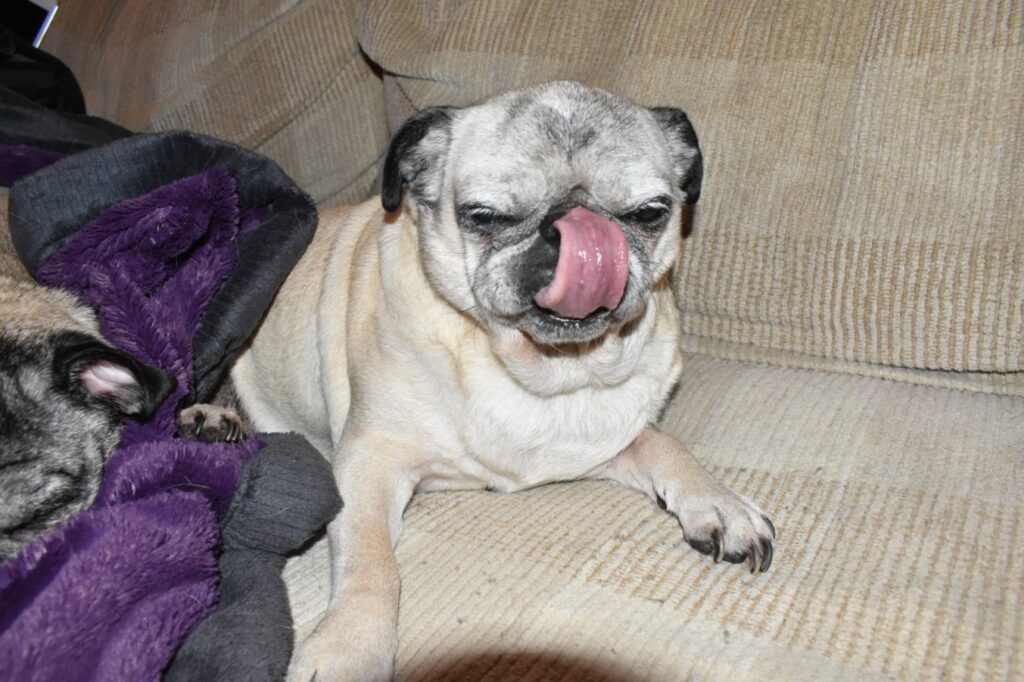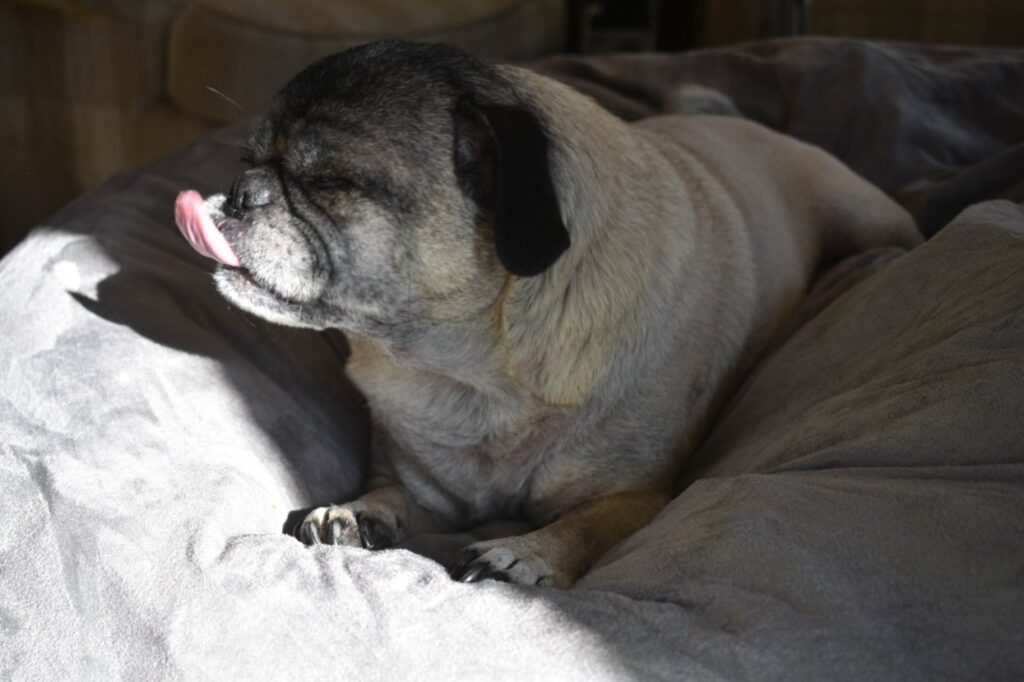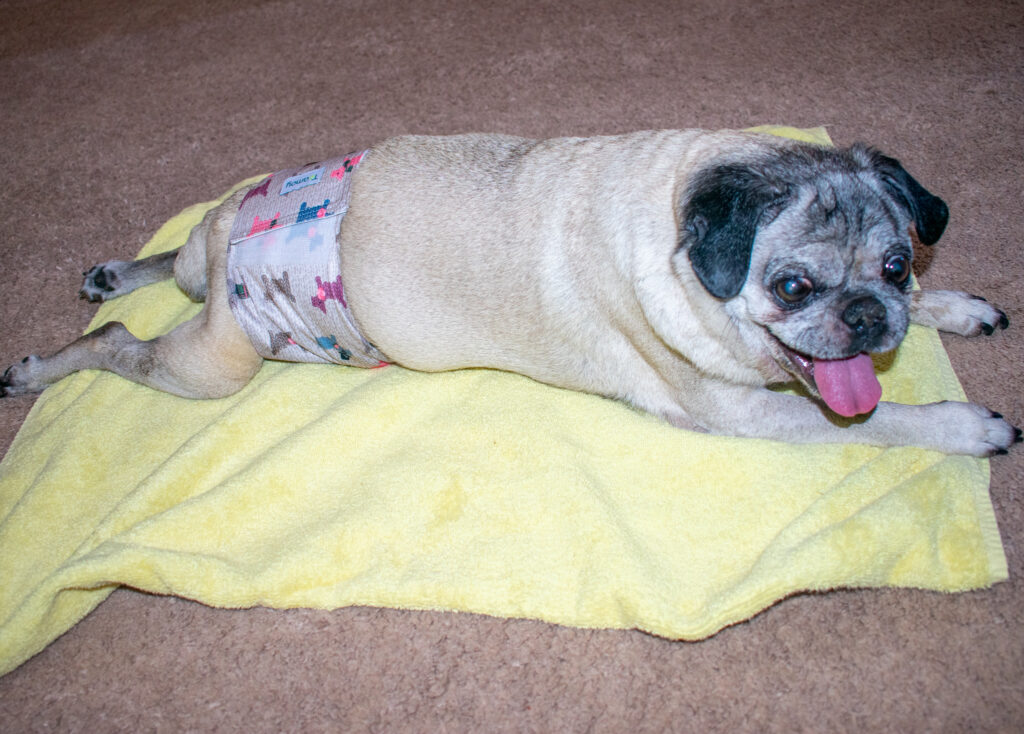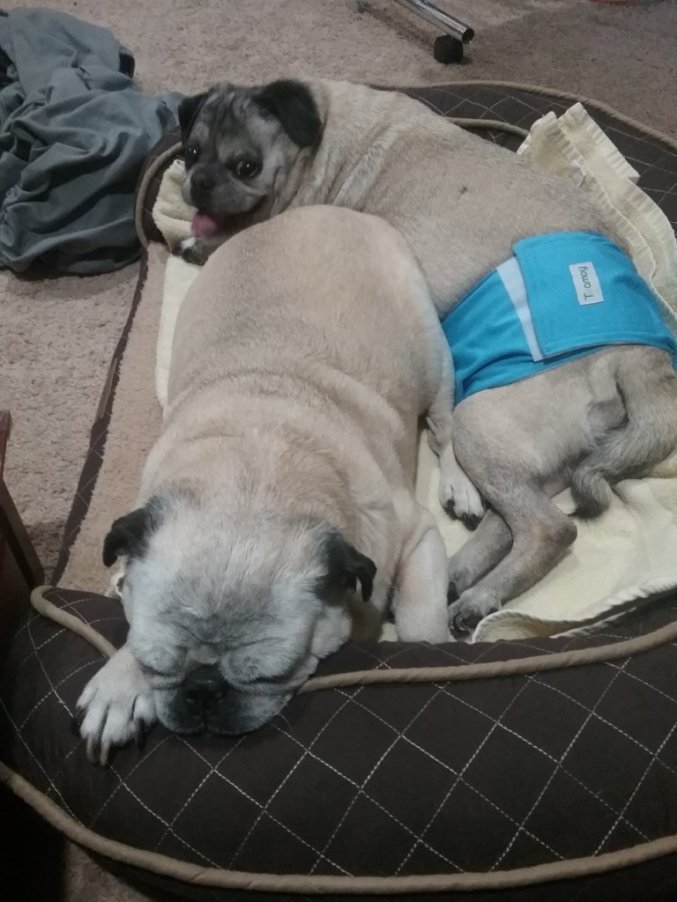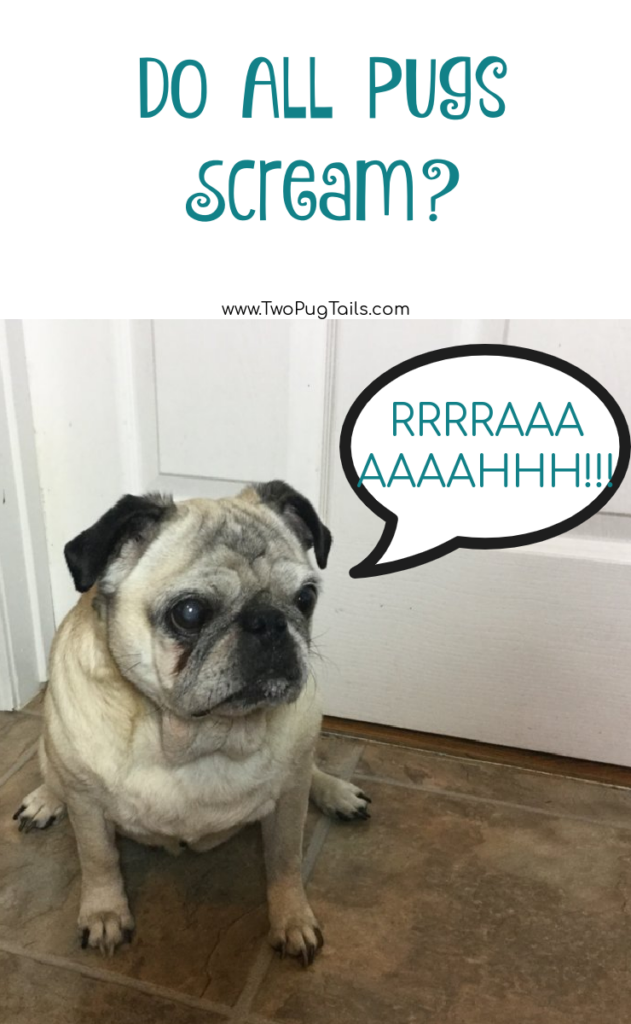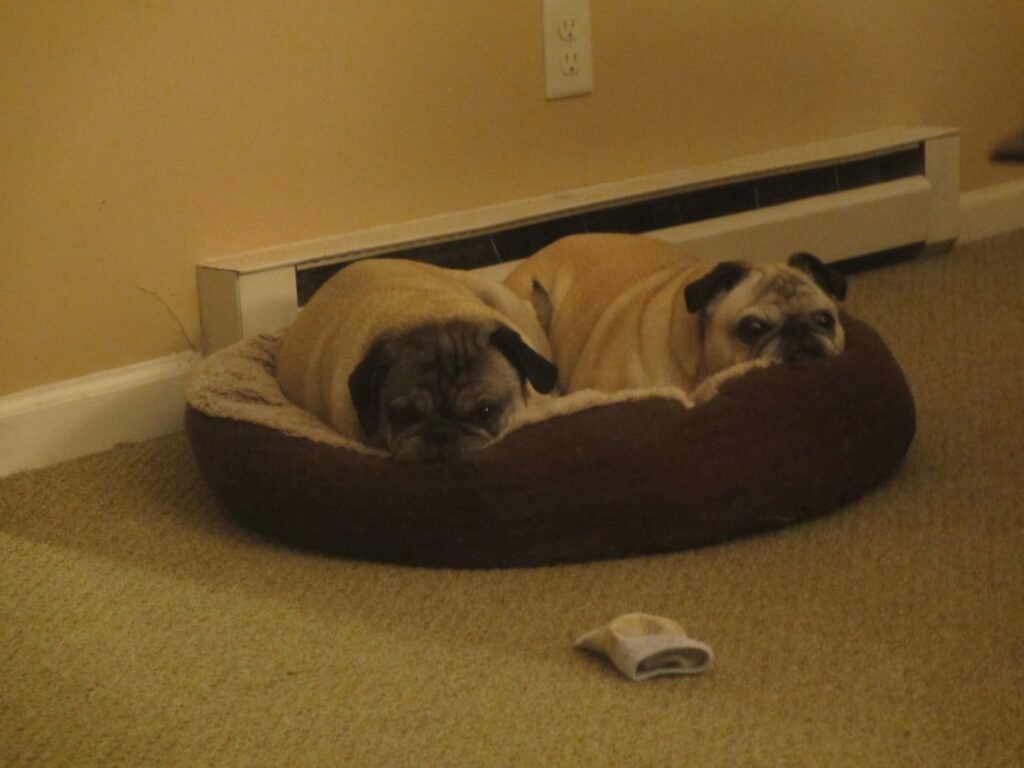Are Pugs Prone To Anxiety?
Pugs are prone to separation anxiety, specifically. Outside of separation anxiety, they aren’t known to be more anxious than other dog breeds. Still, anxiety isn’t unusual in dogs in general so many pugs have anxiety about various things.
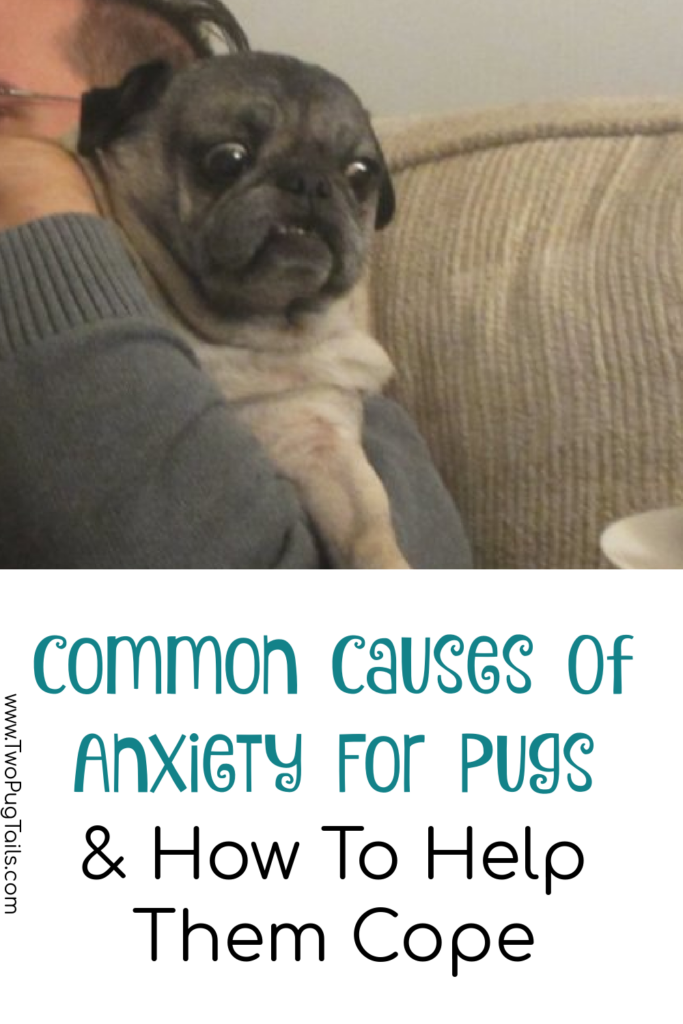
Signs of Anxiety In Pugs
Pacing.
Drooling.
Panting despite not being hot or active.
Destructive behavior such as chewing on things they shouldn’t.
Being jumpy or having dramatic reactions.
Whining, whimpering, or crying.
Avoidance. Sometimes pugs will run away from what they are afraid of. Other times they might just try to hide or seek solitude to calm themselves.
Shaking or shivering when not cold.
Tucking their nail low or between their legs.
Excessive self-licking or other self-soothing behaviors.
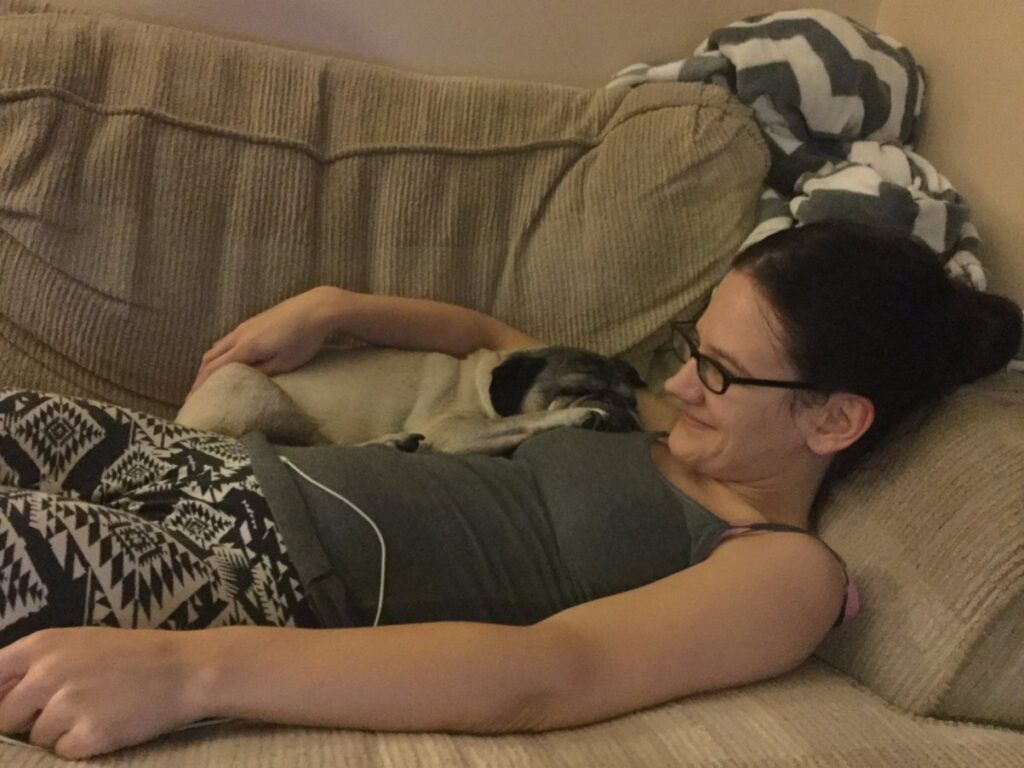
Common Causes Of Anxiety For Pugs
Separation from their owner or family. Pugs were bred to be companions so they are truly lap dogs to the bone! Due to this, separation from their people is particularly difficult for them. Some pugs may have separation anxiety if separated from other pets in the household that they have bonded with.
Thunder. Thunderstorms are a common cause of anxiety in dogs in general, and pugs are no exception.
Fireworks are another common fear for dogs in general.
Vacuum cleaner sounds. What is this noisy contraption moving around the living room??
Having their nails trimmed. For some this can be due to having felt pain if their nails were ever cut too short. For many dogs, they’ve never been hurt while having their nails cut but it still is just a confusing and perhaps physically awkward experience for them.
Going to the vet. Some dogs remember being injured a the vet, or hearing loud noises while at the vet that scared them. For others, they may sense that their ower is worried about them when at the vet, or they may dislike being put on the exam table. For various reasons, lots of dogs experience nerves while at the vet.
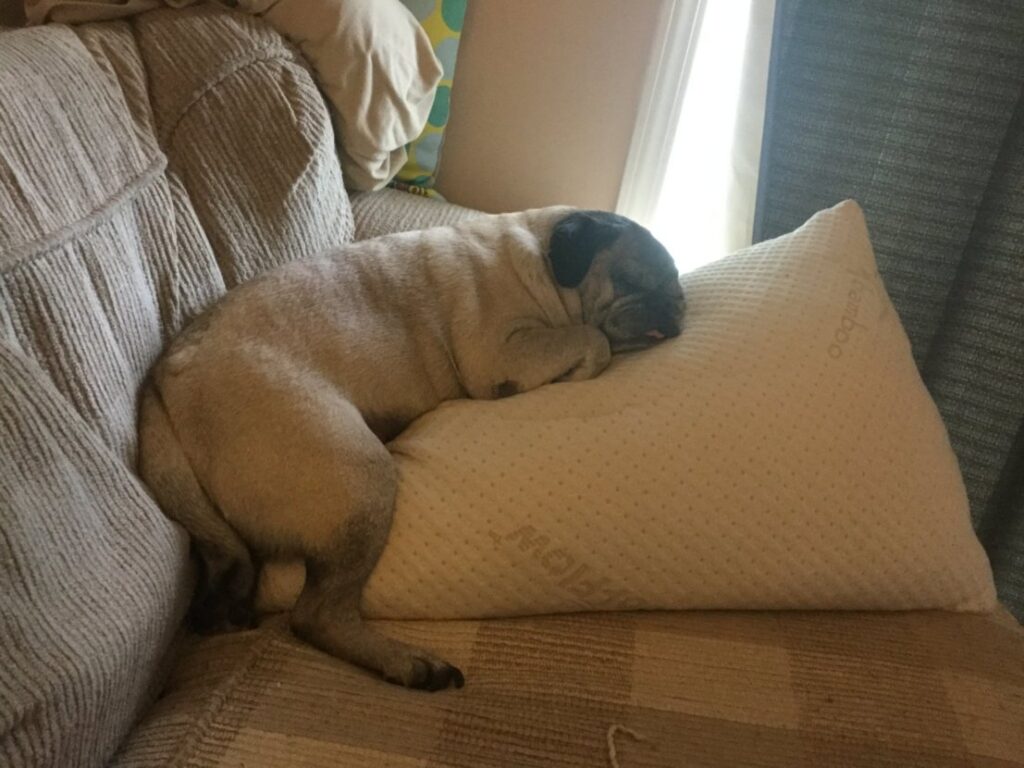
How To Help A Pug With Anxiety
Desensitize them slowly but surely. This can be especially helpful for things that your dog needs to experience sometimes, such as vet visits or nail trims. Allowing them to get a little nervous without letting them get to a full-out panic can desensitize them over time. We did this with nail trimming with my pug. We’d start with trying to trim one nail and would continue if he was uncomfortable but not freaking out. If he started to get ‘too’ worked up, we’d stop and try again a few hours later or the next day rather than forcing him through all of his nails at once.
Avoidance. In some cases, just letting your dog avoid their anxiety trigger can work. Of course, this is only if the source of their anxiety is something they don’t need to have in their lives.
Drown out the noise. If your dog dislikes certain sounds like fireworks, thunderstorms or the vacuum, sometimes playing other sounds for them can help. If you put on loud music while vacuuming, the vacuum may bother them less.
Compression wraps. Some dogs find compression soothing. Thundershirs are a popular brad of compression shirts, but there are many offbrands as well.
Leave them your scent. If you have to leave your pug home alone and they struggle with separation anxiety, leaving them with a t-shirt you’ve worn (or something similar) may be soothing to them.
Positive associations. Try to combine a positive experience with your dogs anxiety trigger. For example, if they are afraid of your neighbor’s dog, you can try giving them their favorite dog treat when they see the neighbors dog. Over time, they can grow to associate the neighbors dog with getting a treat which can help them to have a more positive association with that dog.
Using a kennel or reducing your pug’s access within the home. For some dogs, having free reign of the home while home alone is anxiety inducing. For those dogs, beig left in a kennel or limited to just one area while home alone may be more comforting. You could try using a baby gate or pet gate to keep your dog blocked in one room.
Kongs with frozen peanut butter or other interactive toys can give your pug something to do to keep their mind off their worries.
Leaving sound on when you leave the house. Some feel that their days stay calmer if they have a radio or TV on when home alone. If your home usually has sound happening and then it’s totally silent when your pug is home alone, this may make it feel more unusual for your dog. Keeping some sound in the home may make them less aware of people not being home.
Get them tired before they face their anxiety trigger. For example, if your dog dislikes being left home alone, you may take them on a good walk before you leave. This can give them less energy o focus on their anxiety and may increase the odds that they’ll just nap when you’re gone. I used to find it helpful to tire my pugs out a bit before we went to the vet, too.
Medication. When needed, vets can provide anxiety medication for pets.
